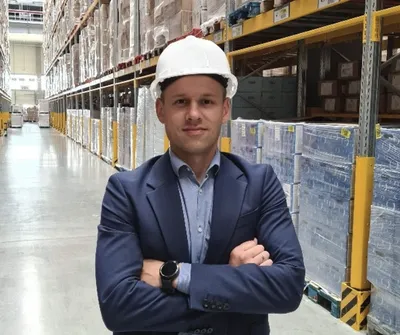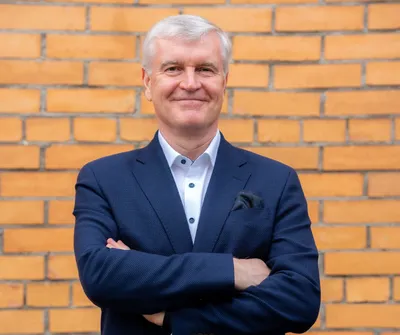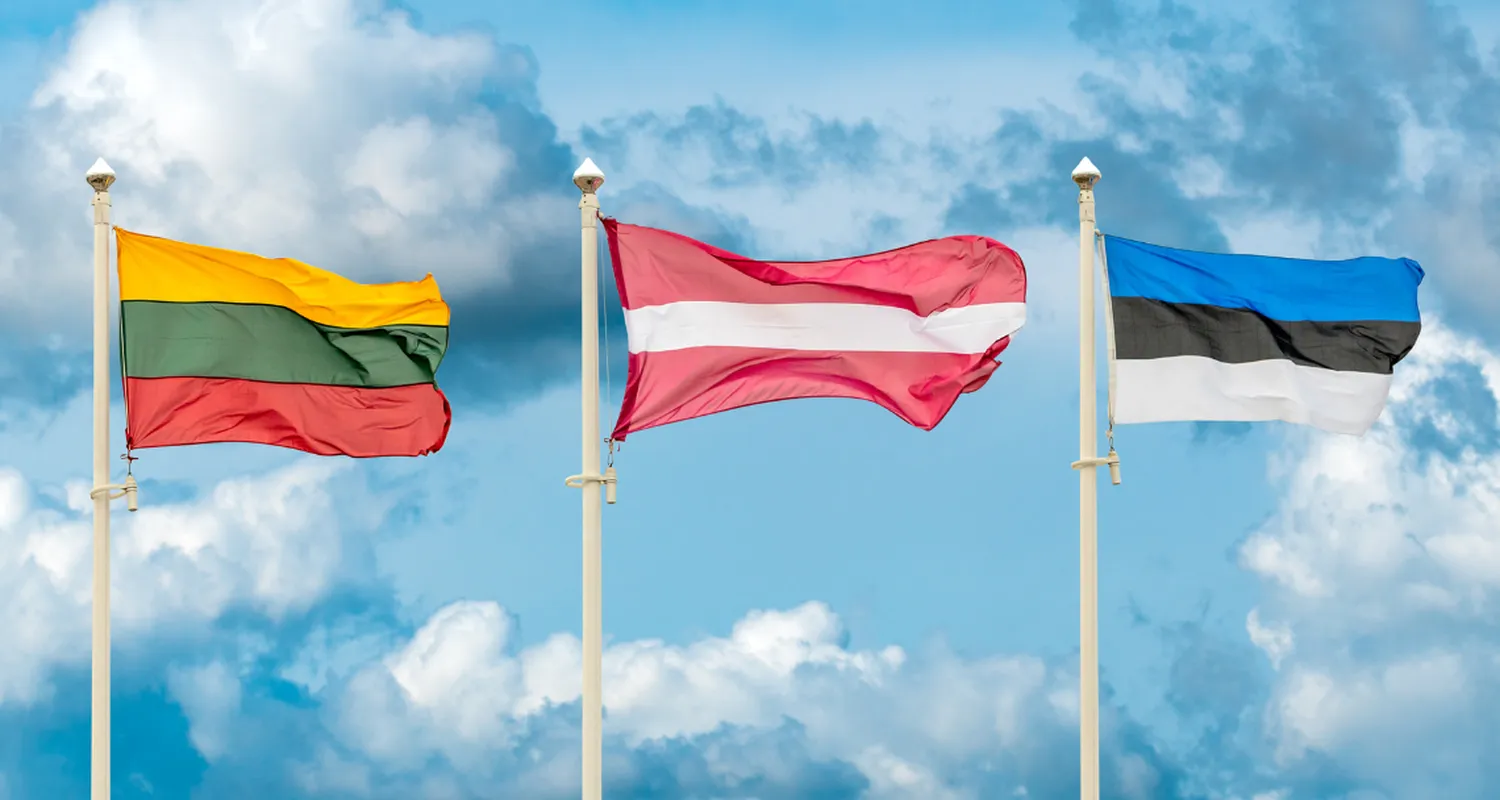The need for agile and innovative leadership is more critical than ever. As Baltic States strive to strengthen their positions in the global market, leaders who can adapt quickly and drive innovation are essential. Across the region, companies are looking for individuals capable of navigating complex and evolving business landscapes. These leaders not only foster growth and resilience but also ensure that their organizations stay competitive by embracing change and spearheading forward-thinking strategies in their respective industries.

According to Kaspars Novickis from Latvia, Director of Renewable Energy Development at Latvenergo AS, agility and innovation are not merely buzzwords but interconnected, integral elements of today's leadership philosophy, helping his team and him ensure resilient and efficient project delivery. ‘Throughout my career, which includes delivering building and infrastructure projects such as railway stations, airport facilities, retail construction and, more recently, the design, procurement and construction management of renewable energy generation projects, agility and innovation have been paramount to ensuring successful project delivery. Agility in my professional journey involves navigating market changes, such as material shortages and inflation, while overcoming bureaucratic and on-site challenges.
Whether managing permit complexities, addressing delays, or controlling costs, agility empowers me to implement solutions that keep projects on schedule and within budget. This requires proactive risk management, flexibility, swift decision-making, and adaptability—essential traits in an ever-evolving industry where unforeseen obstacles are the norm.
In my experience, innovation isn't confined to a specific element or product but involves activities that enhance value and drive a project to success. By adapting successful approaches from other contexts to fit my projects, I facilitate continuous progress and efficiency. Innovation often means sourcing new products, partnering with novel suppliers, engaging different contractors, and making strategic design changes. The ongoing process of exploring and implementing tailored solutions fosters a culture of continuous improvement and growth.’
The Baltic States: Comparative overview
Latvia has been making significant strides in innovation. According to the Global Innovation Index 2023, Latvia improved its ranking to 37th place globally, climbing four positions from the previous year. This improvement is indicative of the country's increasing investment in research and development and innovation infrastructure. The number of patents filed in Latvia has increased by 3.28%, and high technology exports have grown by 5.94%, positioning Latvia 25th globally in this category (Invest in Latvia). Moreover, the European Innovation Scoreboard 2023 classifies Latvia as an "Emerging Innovator," highlighting its strengths in creative outputs and infrastructure while pointing out areas for improvement such as business policy and software spending (Research and innovation).
In comparison, Estonia is often regarded as a leader in digital innovation within the Baltic region. Estonia's e-government initiatives and digital ID system are benchmarks of how technology can transform public services and business environments. The country's startup ecosystem, supported by a favorable regulatory framework and robust digital infrastructure, makes Estonia a model of agility and innovation.
Lithuania, on the other hand, has been focusing on fintech and biotechnology. The country has created a conducive environment for startups in these sectors, with significant investments in tech parks and innovation hubs. The Lithuanian government's proactive approach in creating a startup-friendly ecosystem has attracted numerous entrepreneurs and investors, further bolstering the nation's innovative capacity.

Kirilas Kundusas from Lithuania, Group Chief Financial Officer at Lords LB Asset Management, states that they have implemented key strategies to foster agility and innovation, primarily by seamlessly integrating internal processes with external service providers. ‘Collaborating closely with valuators, auditors and outsourced accountants streamlines operations and enhances our ability to quickly respond to market changes and regulatory requirements. This cohesive workflow ensures efficiency and adaptability.
We emphasize talent management as a driver of innovation, investing in continuous development and fostering a culture of learning and adaptability. Regular training, workshops and cross-department collaboration keep our team at the forefront of industry trends. By nurturing a skilled workforce, we stay agile and responsive to new investment opportunities in a rapidly changing market.
One of our key challenges is balancing innovation with strict regulatory compliance as a licensed fund management company supervised by the Bank of Lithuania. While this can slow new ideas, we overcome it by collaborating with leading Scandinavian and local banks, supranational institutions, and international debt funds for strong financial and operational support. Partnerships with external valuators, Big Four auditors and top outsourced accountants help us navigate regulatory matters quickly. This support network allows us to integrate compliance early, enabling swift adaptation to market changes while upholding governance and accountability.
Operating in the Baltic States presents unique advantages and challenges that affect how companies in the region innovate and adapt. The Baltic States are becoming a key hub for outward investment, with investors increasingly looking westward. This trend is fueled by strong education, a dynamic market and a growing desire for diversification. At Lords LB Asset Management, we are leading this movement, being among the first to implement comprehensive strategies in Poland. Our expansion into Poland has leveraged the region's growth, particularly in real estate. While navigating diverse regulations is challenging, our local expertise and strategic partnerships ensure smooth cross-border operations, offering clients broader opportunities for growth and diversification.’
The Role of Executive Leadership
Companies in the Baltic States require leaders who are not only adept at managing change but also possess the vision to drive innovation. They foster a culture of continuous improvement and creativity, leveraging digital tools and technological advancements to streamline operations and enhance customer experiences.
Share Embracing Change and Proactivity
In the Baltic States businesses operate in a context of rapid technological and market changes. This requires leaders to be proactive, forward-thinking, constantly scanning the horizon for new opportunities and potential challenges. By staying ahead, they can quickly adapt when needed, keeping their companies competitive and relevant.
Innovation as a Strategic Imperative
Fostering a culture of innovation is not just a strategic choice but a necessity. Companies are increasingly recognizing that innovation must be embedded in their organizational DNA, and this starts from the top. Leaders must think creatively, encourage experimentation within an organization and be willing to take calculated risks. By doing so, they can drive the development of new products, services and business models that meet evolving customer needs and open new market opportunities.
Leveraging Technology for Transformation
The digital revolution presents both challenges and opportunities for Latvian, Estonian and Lithuanian businesses. Leaders who can effectively use technology to transform their businesses stand out. This means not just adopting the latest technologies but also integrating them into everyday business activities to improve efficiency, productivity, and customer satisfaction. Technologies like AI, machine learning, blockchain and the IoT offer huge innovation potential. Leaders who are skilled at using these tools can push their companies to the top of their industries.
Fostering a Culture of Agility and Innovation
To make agility and innovation thrive in a company, leaders need to make a focused and ongoing effort - to cultivate a workplace culture that values flexibility, creativity, and continuous learning. This involves empowering employees to take initiative, providing them with the resources and support they need to experiment and innovate. And after that it is very important to recognize and reward employees’ contributions. In the Baltic States, where the talent pool is highly skilled and increasingly tech-savvy, using the skills and talents of employees is key to boosting innovation and keeping the company agile.

Jaan Sildam, from Estonia, Head of Product Management Marketplace at Unite Services GmbH & Co. KG, shared his insights based on past professional experiences: ‘Promoting agility and innovation within an organisation requires strategies focused on adaptability and continuous improvement. In a startup, after achieving product-market fit, we tested the concept in the market, requiring agility to overcome barriers and convert feedback into improved offerings. In all my recent organisations, agility and innovation have been essential for maintaining competitive performance.
For an organisation applying for an e-money license, we built the company strategy, innovated the product portfolio, remained agile, anticipated market trends, aligned competencies and resources and developed execution timelines, roadmaps and a comprehensive business plan.
The biggest challenge in fostering an innovative and agile culture is managing change effectively. With shorter business cycles in today’s fast-paced world, change has become constant. This often requires moving people out of their comfort zones and reigniting their enthusiasm for embracing innovation.
Regional advantages and challenges significantly impact how companies in the Baltic States innovate and adapt. While Lithuania previously had a clear advantage for financial institutions seeking licenses, this has diminished in recent years. Nevertheless, Lithuania remains known for its financial services industry and fintech innovation. Estonia is also an attractive location for financial institutions seeking licenses and a leader in fintech and digitalization.’
Balancing Agility, Innovation and People
To stay competitive in fast-changing markets, leaders must not lose sight of the importance - of their people. A company's employees are its greatest asset and fostering a culture that values employees is crucial for sustainable success. Leaders who prioritize agility and innovation must also ensure that their teams are supported, engaged and motivated.
This involves open communication, continuous professional development and recognition of employee contributions. Ignoring the human element can lead to burnout, reduced morale and high turnover rates, which ultimately undermine the agility and innovation these leaders seek to promote. By balancing technological advancements and market responsiveness with a strong commitment to their people, leaders can build resilient organizations that thrive in the long term.

Toms Auskaps from Latvia, Board Member and Head of Communications and Strategic Development at Balticovo JSC adds: ‘JSC 'Balticovo' competes in global markets, and every cent we save on eggs gives us a significant advantage when competing with major producers from countries such as Poland, the Netherlands, Ukraine and others.
As an export player, work efficiency, innovation and Agile and Lean methods are undoubtedly very important to us. In practice, we actively implement various methods ourselves. Currently, we use eight different methods, and I would like to highlight Kaizen. It has worked well for us, allowing initiatives to come from workers and specialists. This approach motivates them to improve their work efficiency and safety, which is great because the method is ingrained at all levels of the organization.
Regarding innovation, we are heavily focused on developing new products and improving poultry farming. We actively collaborate with the information technology sector to implement various artificial intelligence solutions.’
Conclusion
The Baltic States are on a promising path towards becoming innovation leaders. However, to succeed, companies need visionary and agile leaders who can effectively use investments in technology and infrastructure to achieve real business results. At Kestria, we are dedicated to identifying and cultivating such leaders, ensuring that organizations in Latvia, Lithuania and Estonia are well-equipped to thrive in an increasingly complex and fast-paced global economy.


